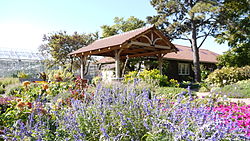| Purdue University Horticulture Gardens | |
|---|---|
 Purdue Horticulture Gardens, Fall 2010 | |
 | |
| Type | Botanical garden |
| Location | Purdue University |
| Nearest city | West Lafayette, Indiana |
| Coordinates | 40°25′26″N86°54′54″W / 40.42389°N 86.91500°W |
| Area | 0.5 acres |
| Created | 1982 [1] |
| Operated by | Purdue University |
| Open | Year-round Donations accepted |
| Website | Official website |
The Purdue University Horticulture Gardens are botanical gardens at Purdue University in West Lafayette, Indiana in the United States.

